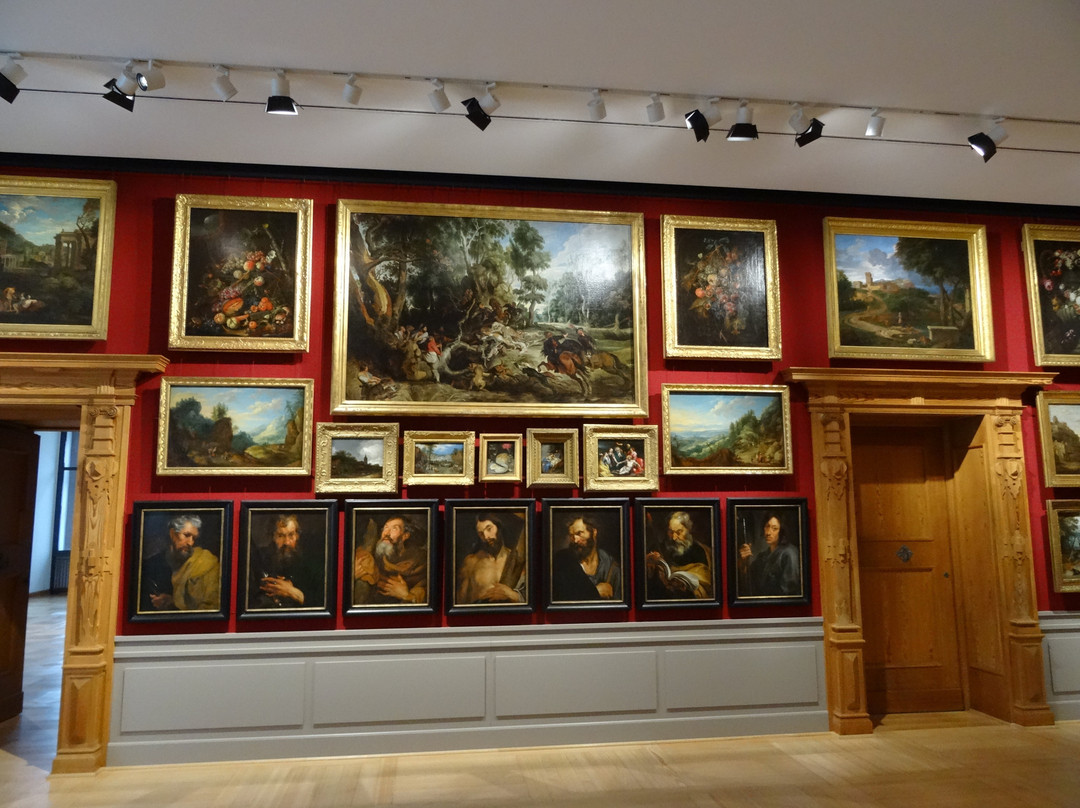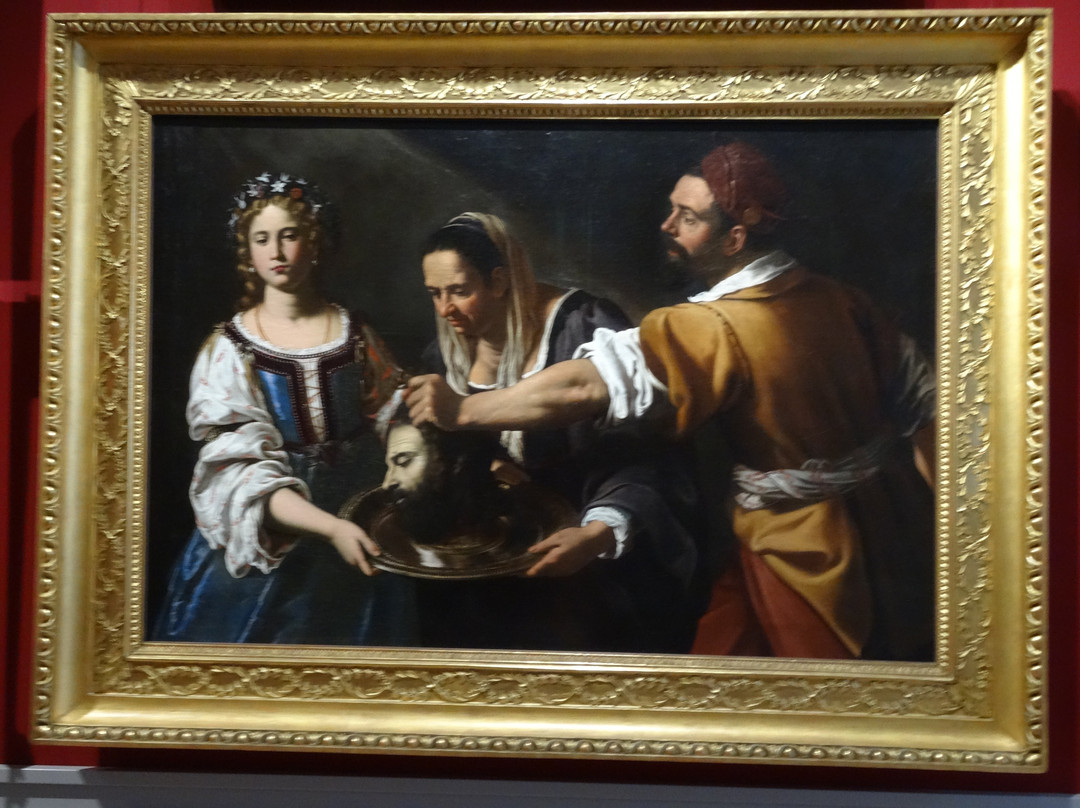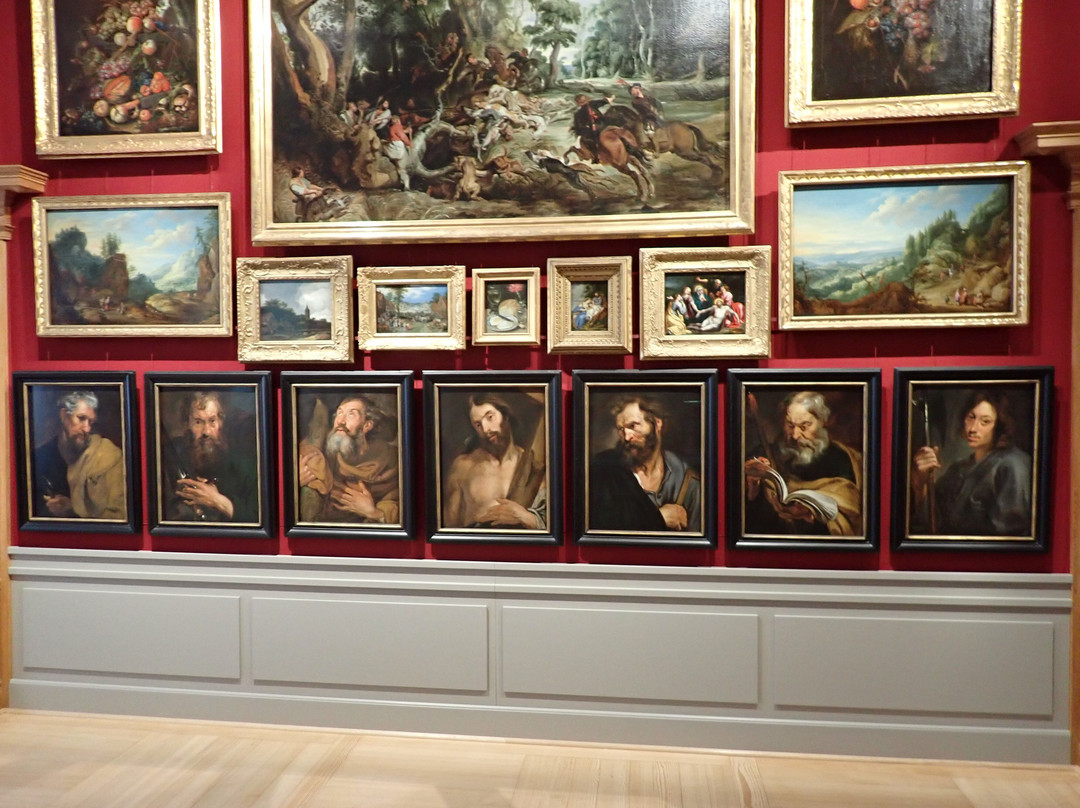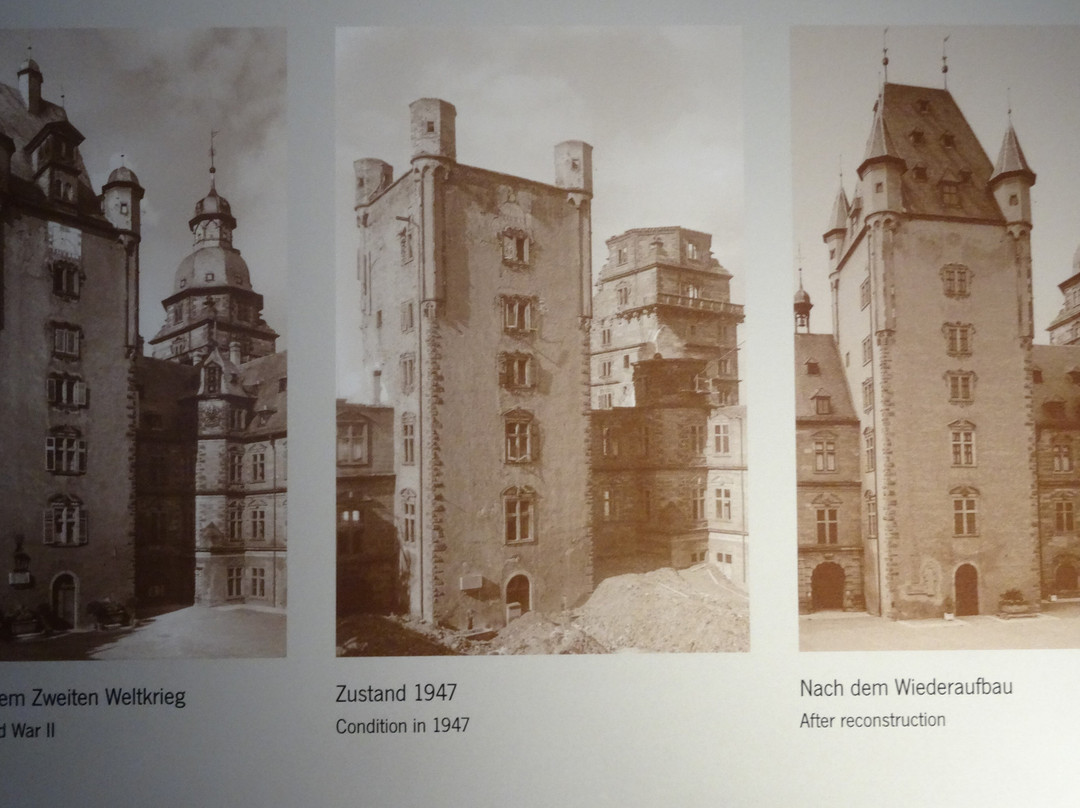的点评
Picturesque Renaissance palace
Schloss Johannisburg mit Schlossanlagen的点评
点评:Before visiting the late Renaissance Johannisburg Palace, we didn’t know it was almost completely destroyed in World War II and took many years of painstaking restoration. We found the models, information panels, and images illustrating its history since mediaeval times very interesting. Today the castle houses so many sections we needed three hours for even a cursory glance at everything. In the Parament Chamber we stood in awe of the patient craftsmanship of those who made the intricate embroideries in silver, gold, and silk threads of the ecclesiastical vestments. We didn’t much care for the overload of dark alabaster sculptures and reliefs by Hans Junker in the chapel next door. Although one must admire the effort put into piecing together their shattered remains after the war. We had a quick look at the surprising collection of cork models showing the fascination of the times for ancient Rome and walked through the reconstructed Princely Apartments with their cool 18th-century neoclassical furniture. But we dedicated most of our time to the collection of paintings of Lucas Cranach the Elder and Flemish, Dutch, and German masters. As we had bought a (very cheap) combination ticket, we walked to the Pompeiianum through the lovely palace gardens, all the way enjoying splendid views towards the Main River, the red sandstone Palace, the cute Breakfast Temple, and the colourful Pompeiianum.
翻译:在参观约翰尼斯堡宫之前,我们并不知道这座文艺复兴晚期的宫殿在二战中几乎被完全摧毁,并经过多年的艰苦修复。我们发现这些模型、信息面板和图片都非常有趣,它们展示了自中世纪以来的宫殿历史。如今,这座城堡内有如此多的展区,我们甚至需要三个小时才能粗略地看一眼。在祭衣室,我们惊叹于那些用银、金和丝线制作教会礼服的工匠们的耐心工艺。我们不太喜欢隔壁教堂里汉斯·容克 (Hans Junker) 制作的大量深色雪花石膏雕塑和浮雕。不过,人们必须钦佩战后人们拼凑破碎遗迹的努力。我们快速浏览了一组令人惊讶的软木模型,这些模型展示了古罗马时代的魅力,并穿过重建的王子公寓,里面摆放着很酷的 18 世纪新古典主义家具。但我们大部分时间都花在欣赏老卢卡斯·克拉纳赫以及佛兰德、荷兰和德国大师的画作上。因为我们买了一张(非常便宜的)套票,所以我们穿过美丽的宫殿花园步行到庞贝古城,一路上欣赏着美因河、红砂岩宫殿、可爱的早餐神庙和色彩缤纷的庞贝古城的壮丽景色。




此点评仅代表旅行者个人的主观意见,并不代表TripAdvisor以及其合作方的意见。
关于我们
|
新闻动态
|
商务合作
|
会员中心
|
业主中心
|
业主通
|
常见问题
|
意见反馈
|
联系我们
|
营业执照
© 2025 Tripadvisor 版权所有。
使用条款 |隐私政策 |网站工作原理
部分照片由 VFM Leonardo 提供。
* Tripadvisor不是旅行社,也不是旅游预订服务代理商。我们提供免费、客观、公正的旅游资讯服务。 (显示更多)
TripAdvisor LLC 既不是预订代理商,也不是旅游运营商,不会向网站用户收取任何服务费。 按照规定,在 Tripadvisor 发布机票价格、游览和旅行套餐的合作伙伴(航空公司、旅行提供商及预订代理商),其标价须包含所有费用和附加费用。 例如, 机场出入境税费、消费税与其他服务费、手续费、杂费及附加费用。 当您向我们的某个合作伙伴进行预订时,请务必查阅他们的网站以了解当地行政部门要求的所有适用费用的具体情况。 除非另有说明,机票价格通常指的是一个人的价格(以人民币计)。
为方便起见,TripAdvisor LLC 根据从我们的预订合作伙伴获取的空房率计算每个酒店的均价。 对于游览和景点来说,所显示价格通常是每位成人的最低可用价格。 对于列出的任何旅行套餐或优惠,TripAdvisor LLC 无法保证任何特定的费率或价格。 此外,酒店均价每晚会更新,并以您的首选币种表示(使用现行汇率)。 由于这些已换算的价格是预估价格,因此,有关具体金额和币种请与预订网站进行核实。
此外,TripAdvisor LLC 无法保证我们网站上宣传的价格随时有效。 标价可能需要预订一定天数才能生效,或有不可用日期、使用条件或限制。
TripAdvisor公司对外部网站的内容一概不负责。优惠价格中不含税和其他费用。
ICP证:沪B2-20200433
沪ICP备20013175号
 沪公网安备31010502005427号
沪公网安备31010502005427号鹰程信息技术(上海)有限公司
货币/国家及地区
¥CNY
中国

